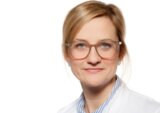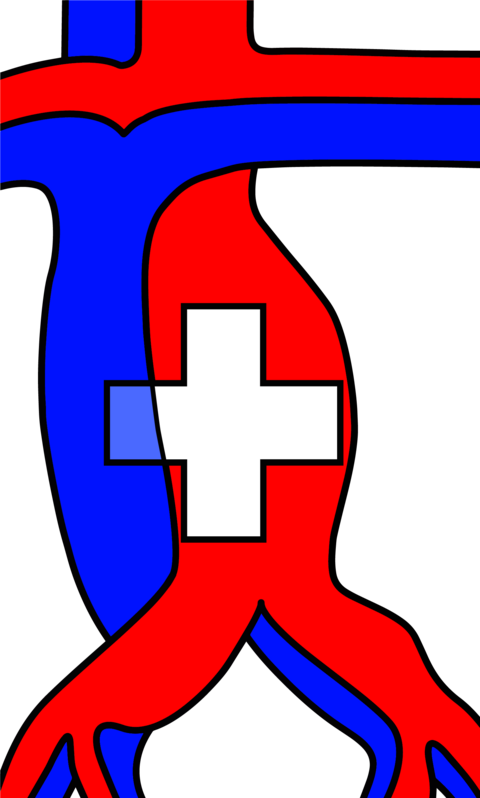Morbidity and Mortality Meetings (M&Ms) are conferences in which complications, atypical courses, and unexpected outcomes are retrospectively evaluated by a team of medical professionals (superior, peers, and learners). In contrast to a computerized database of potential difficulties M&Ms often discuss only a portion of the errors that occur in a department [1]. Following a description of a patient's condition and its course, an investigation is performed to uncover the root reasons of errors and complications. The goal of this analysis is to prevent a similar incident from recurring in the future [2, 3]. These discussions, known as the "golden hour" of surgical training, are critical learning opportunities in medical education [4].
The practice of reflecting on errors was initially proposed by E. Codman in the early 20th century. However, it was not until 1983 that weekly M&Ms became a compulsory requirement for surgical residency training certification in the United States, as mandated by the Accreditation Council for Graduate Medical Education [3, 5]. After nearly four decades, the Swiss Patient Safety Foundation presented suggestions for the implementation of M&Ms in Swiss hospitals [6]. Their recommendations are meant to support interested hospitals. Due to their non-mandatory nature, the structure, content, and format of M&Ms continue to differ among the country.
Prior to the adoption of the afore mentioned M&Ms’ standards in Switzerland, a preliminary analysis conducted in 2017 found that head physicians involved were primarily concerned with accomplishing procedures and processes improvements through their M&Ms [7]. Few hospitals worked to improve their employees' individual competencies [7].
We will analyze criticisms of M&Ms on four specific topics (participant involvement, case selection, role of emotions, and interdisciplinarity), and based on past challenges and barriers, we will suggest some improvements to achieve best practices.
Topic 1: Transitioning from passive observers to active participants
Surgery is characterized by a conventional hierarchy, as evidenced by the seating arrangements during department reports where the most experienced individuals occupy the front row or “inner circle”, while the junior trainees sit in the back or in the “outer circle” [8]. The setting also implies who has the right to speak and does not foster spontaneous speaking [8]. For M&Ms, this conventional arrangement should be changed. The meetings could be conducted at an alternative room, where the seating is arranged in a U-shape or around a circular table, promoting a mix of hierarchical levels to reduce inhibitions.
Furthermore, senior consultants and head physicians typically take most of the speaking time in M&Ms, as they possess expertise in surgical methods and the management of complications. This leads to a two-headed issue: 1. An asymmetry in communication, as trainees are only observers of high-level discussions, and 2. Clinical or hierarchical opinion leaders may bias an open discussion [9]. Actively engaging the trainees by allocating time for inquiries or direct involvement may foster active participation.
A further reason for passive participation of trainees can be found in the lower level of awareness of M&Ms in German-speaking countries compared to Anglo-Saxon countries and related lack of preparation. All general surgery training programs in the U.S. are required to organize weekly M&Ms [10] whereas this is not the case in German-speaking countries, leading to a poor implementation of M&Ms [11]. At our institution, medical students from Switzerland and Germany show a lack of knowledge about the regular occurrence of M&Ms in their clinical practice, despite them being a target audience in German Medical Association recommendations [12]. The lack of knowledge leads to a deficiency in expectations and preparation of M&Ms. Addressing M&Ms early during training and integrating formal instruction about them into institutions or medical universities may help to improve knowledge and preparation of M&Ms and achieve their learning goals.
Therefore, adjusting M&Ms’ setting, posing level-appropriate questions to trainees as well as promoting discussions, and improving trainees’ knowledge of M&Ms may empower the audience towards a more active participation [13].
Topic 2: Selecting Appropriate Case(s)
To select appropriate case(s) for M&Ms, the first step is correct identifications of complications happening within a hospital. Surgical complications are standardly graded using the Clavien–Dindo classification [14]. Typically, complications scoring three (indicating at least the need for interventions) or higher are selected for discussion at M&M conferences. [9, 14].
A general self-reporting paradigm is susceptible to underreporting, as surgeons may be reluctant to discuss complications involving their own patients [9]. In a study from Sehti et al. in a pediatric surgical department, a difference of 12 % was shown between a self-reporting manner and a daily systematic documentation. Nevertheless, the authors emphasized that the difference was caused by an increase in reporting of minor complications. There was no difference in reporting of major complications, but severe complications accounted for 8 % of complications discussed during weekly M&Ms in the self-reporting period versus 22 % in the period of systematic assessment [15].
To bypass underreporting caused by self-blame avoidance, a solution would be to introduce automated reporting of complications through staff not directly involved in the operating room, but with daily contact to the patient, e.g., surgical residents and their supervisors from the ward.
However, M&Ms primarily serve as a means of teaching rather than simply reporting issues. Therefore, the emphasis should not be on the quantity of reports, but rather on the educational impact that the discussed case had on the audience. Given the current discussions of a reduced 42+4-hour workweek for residents in Switzerland, it is crucial to maximize educational possibilities within the designated time and select appropriate cases for M&Ms.
In the same sense, it is also not recommended to rely on rare and unusual cases with limited generalizability [16, 17]. These cases might be interesting, but they will not allow trainees to apply the acquired knowledge in their future practice due to their rarity. Discussion of more common and relevant cases and past errors reinforces learning through direct confrontation with similar situations soon after the execution of M&Ms.
Furthermore, a study conducted by Lecoanet et al. revealed that individuals perceive positively the chance to allocate more time to a smaller number of cases. If this option is implemented, the selected example should provide substantial educational value for the audience, focusing on errors or concerns related to system safety. However, the subjective nature of this choice (such as who gets to choose the case or the hope that one's mistake won't be selected) might negatively influence the blame-free culture.
Finally, the option of discussing every case brings objectivity, but reduces time for reporting patient’s history and for discussion.
An optimal learning outcome for participants may be best achieved by combining a weekly brief discussion of each case with a more in-depth meeting every three months.
Topic 3: Balance Rationality and Humanization
Historically, M&Ms have served as a symbol of neutrality, fostering an environment free from blame and shame. This environment encourages the discussion of just factual information, discouraging the act of assigning blame and preventing any animosity amongst participants [3].
However, even in the most supportive environment, feelings of shame and guilt are inevitable and physicians' emotions and well-being are linked to patients’ emotions and outcomes [18]. Clinicians involved in complicated cases often experience the 'second victim' phenomenon, where they suffer emotional distress, guilt, and trauma due to unintentional errors, ultimately leading to burnout [18-20]. After the Covid-19 pandemic and the rise in hospital deaths, M&Ms have adopted a new role in reducing medical professional burnout by emphasizing humanization, compassion, and empathy.
This is why Pang et al. suggested restructuring M&Ms to provide additional space for reflection and human-centric discussions on negative outcomes, directly addressing emotional burdens such as management of patient’s families [18].
In conclusion, a blame-free environment should be the goal of M&Ms without forgetting that we are all humans: emotional support through errors is part of our duty to our peers and a space in M&Ms should be made to express our feelings.
Topic 4: Interdisciplinary Patient Care
Historically, M&Ms have been conducted in closed groups, where physicians from a certain field analyze cases only within their own group [16, 17]. However, in addition to the lead surgeon, multiple disciplines and (non-)healthcare professionals are routinely engaged in the treatment and management of a patient's potential complications.
In a systematic review from Beaulieu-Jones et al., multistakeholder discussion was seen as an important part of effective M&Ms [21]. This finding is also supported by the Swiss Patient Safety Foundation and the Ottawa M&M Model (OM3) who suggest including nursing and allied health professionals in M&Ms [6, 16, 17]. Nevertheless, even if the theoretical positive impact of interdisciplinary is undisputed, its implementation still faces significant barriers: varying confidence levels among healthcare professionals in speaking up during M&Ms, possible negative effect on participants’ openness, logistical challenges such as scheduling as well as legal and regulatory issues [21-24].
Finally, the ultimate step to include the whole team might be inviting patients into M&Ms to foster a more collaborative, transparent, and patient-centered approach. This was already successfully implemented by Myren et al. The study showed better understanding on both sides thanks to insights from patients, resulting in a learning experience for involved physicians [25].
In conclusion, team-based M&Ms might achieve the highest learning effect in clinical and surgical skills for the audience and broaden the range of ideas to prevent future similar errors [23] and a selective inclusion of patients into M&Ms may yield further insights.
Conclusion
To improve M&Ms, it is crucial to promote active engagement of the participants, choose significant cases, e.g., complications of Clavien-Dindo III and higher, foster a human-centered approach, and embrace interdisciplinary collaboration [14]. Implementing organizational changes such as flattening hierarchies and encouraging open conversations is a gradual process, but may guarantee that every error is genuinely transformed into a positive learning experience for the entire audience, and especially surgical trainees.
- Rothmund, M. and W. Lorenz. Influence of Mortality- and Morbidity Conferences on Clinical Success and Clinical Atmosphere. in Vielfalt und Einheit der Chirurgie Humanität und Wissenschaft. 1998. Berlin, Heidelberg: Springer Berlin Heidelberg.
- Seiler, R.W., Principles of the morbidity and mortality conference. Acta Neurochir Suppl, 2001. 78: p. 125-6.
- Kravet, S.J., E. Howell, and S.M. Wright, Morbidity and mortality conference, grand rounds, and the ACGME's core competencies. J Gen Intern Med, 2006. 21(11): p. 1192-4.
- Abdulrasheed, I., D.I. Zira, and A.M. Eneye, Modification of the surgical morbidity and mortality meetings as a tool to improve patient safety. Oman Med J, 2011. 26(4): p. 290-2.
- Liu, V., Error in medicine: the role of the morbidity and mortality conference. Virtual Mentor, 2005. 7(4).
- Häsler L., S.D. Leitfaden Morbiditäts- und Mortalitätskonferenzen. 2019 07.07.2024]; Available from: https://patientensicherheit.ch/wp/wp-content/uploads/2023/03/Leitfaden_Morbiditaets-_und_Mortalitaetskonferenzen.pdf.
- Schwappach, D., Morbiditäts-und Mortalitätskonferenzen in der Schweiz. Schweiz Ärzteztg., 2017.
- Moller, J.E., et al., How doctors build community and socialize into a clinical department through morning reports. A positioning theory study. PLoS One, 2023. 18(5): p. e0284999.
- Zindel, J., et al., Electronic Voting to Improve Morbidity and Mortality Conferences. World J Surg, 2018. 42(11): p. 3474-3481.
- Pierluissi, E., et al., Discussion of Medical Errors in Morbidity and Mortality Conferences. JAMA, 2003. 290(21): p. 2838-2842.
- Fiorentino, A.R. and K.A. Kieffer, Learning Outcomes from an Academic Internal Medicine Morbidity and Mortality Conference. Journal of General Internal Medicine, 2022. 37(9): p. 2239-2245.
- Boy, O. and I. Chop, Methodological guidelines for morbidity and mortality conferences. Berlin: Bundesärztekammer, 2016.
- Prince, J.M., et al., Increased interactive format for Morbidity & Mortality conference improves educational value and enhances confidence. J Surg Educ, 2007. 64(5): p. 266-72.
- Dindo, D., N. Demartines, and P.A. Clavien, Classification of surgical complications: a new proposal with evaluation in a cohort of 6336 patients and results of a survey. Ann Surg, 2004. 240(2): p. 205-13.
- Sethi, M.V., et al., Prospective assessment of complications on a daily basis is essential to determine morbidity and mortality in routine pediatric surgery. J Pediatr Surg, 2016. 51(4): p. 630-3.
- Calder, L.A., et al., Enhancing the quality of morbidity and mortality rounds: the Ottawa M&M model. Acad Emerg Med, 2014. 21(3): p. 314-21.
- Kwok, E.S.H., et al., Implementation of a structured hospital-wide morbidity and mortality rounds model. BMJ Qual Saf, 2017. 26(6): p. 439-448.
- Pang, S. and H.J. Warraich, Humanizing the Morbidity and Mortality Conference. Academic Medicine, 2021. 96(5).
- de Vos, M.S., M.J. Verhagen, and J.F. Hamming, The Morbidity and Mortality Conference: A Century-Old Practice with Ongoing Potential for Future Improvement. Eur J Pediatr Surg, 2023. 33(2): p. 114-119.
- Vanhaecht, K., et al., An Evidence and Consensus-Based Definition of Second Victim: A Strategic Topic in Healthcare Quality, Patient Safety, Person-Centeredness and Human Resource Management. Int J Environ Res Public Health, 2022. 19(24).
- Beaulieu-Jones, B.R., et al., Defining a High-Quality and Effective Morbidity and Mortality Conference: A Systematic Review. JAMA Surgery, 2023. 158(12): p. 1336-1343.
- Samost-Williams, A., et al., Perspectives on Perioperative Team-Based Morbidity and Mortality Conferences: A Mixed Methods Study. Jt Comm J Qual Patient Saf, 2024. 50(2): p. 139-148.
- Samost-Williams, A., et al., Perioperative Team-Based Morbidity and Mortality Conferences: A Systematic Review of the Literature. Ann Surg Open, 2023. 4(3): p. e321.
- de Vos, M.S., J.F. Hamming, and P.J. Marang-van de Mheen, Barriers and facilitators to learn and improve through morbidity and mortality conferences: a qualitative study. BMJ Open, 2017. 7(11): p. e018833.
- Myren, B.J., et al., Openness to new perspectives created by patient participation at the morbidity and mortality meeting. Patient Educ Couns, 2021. 104(2): p. 343-351.









